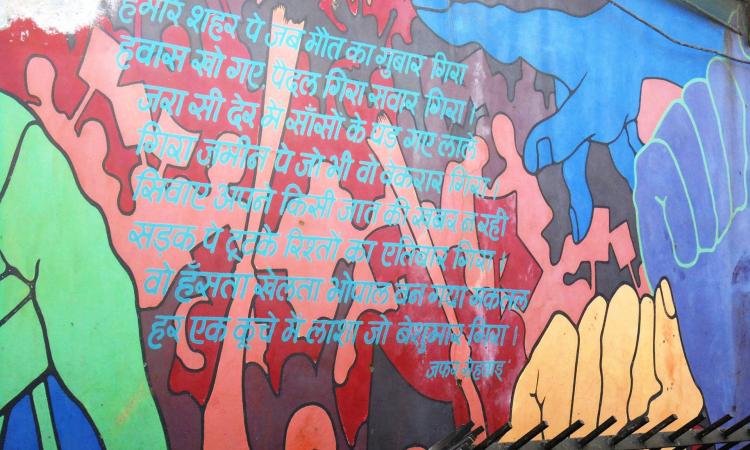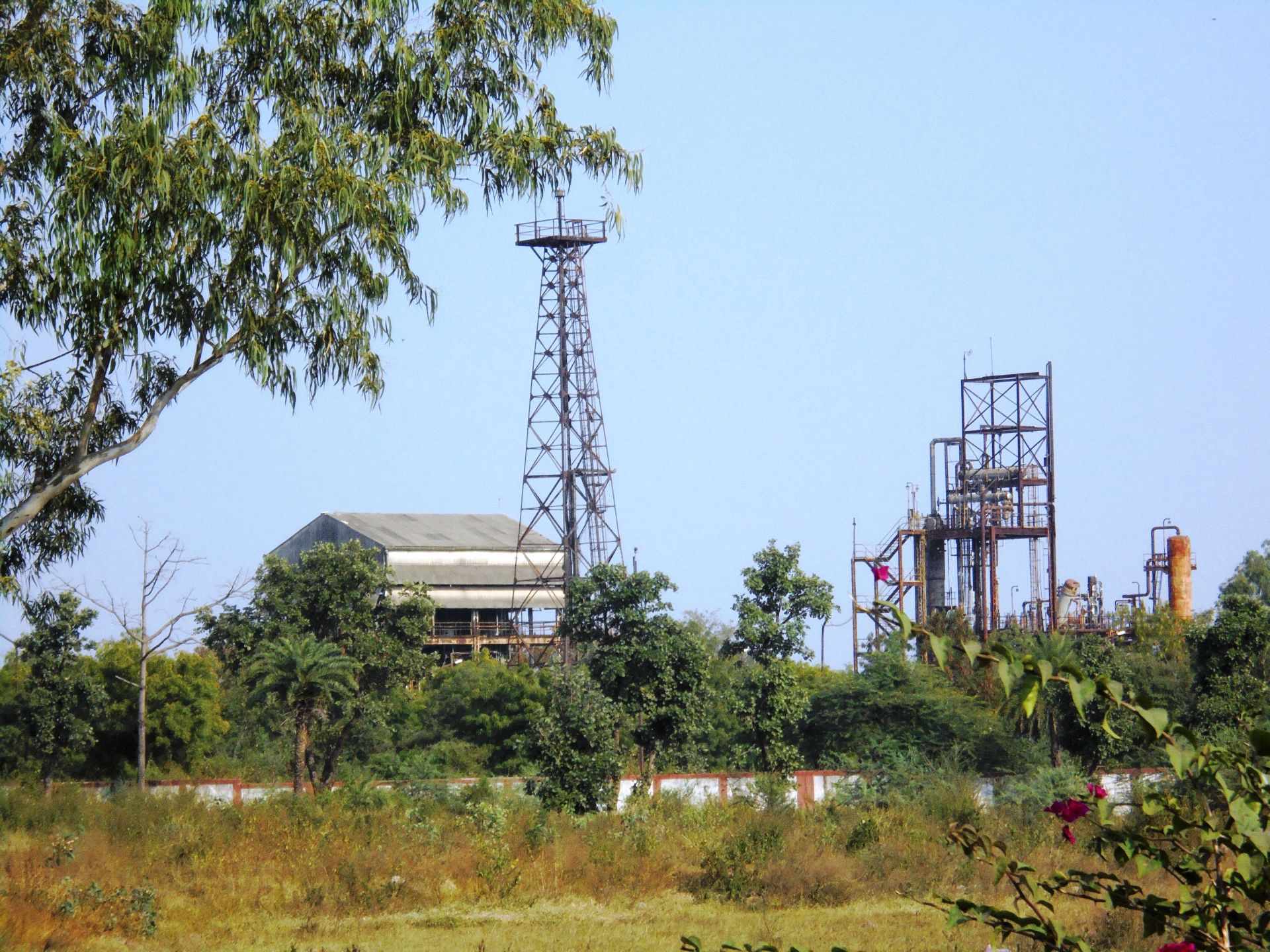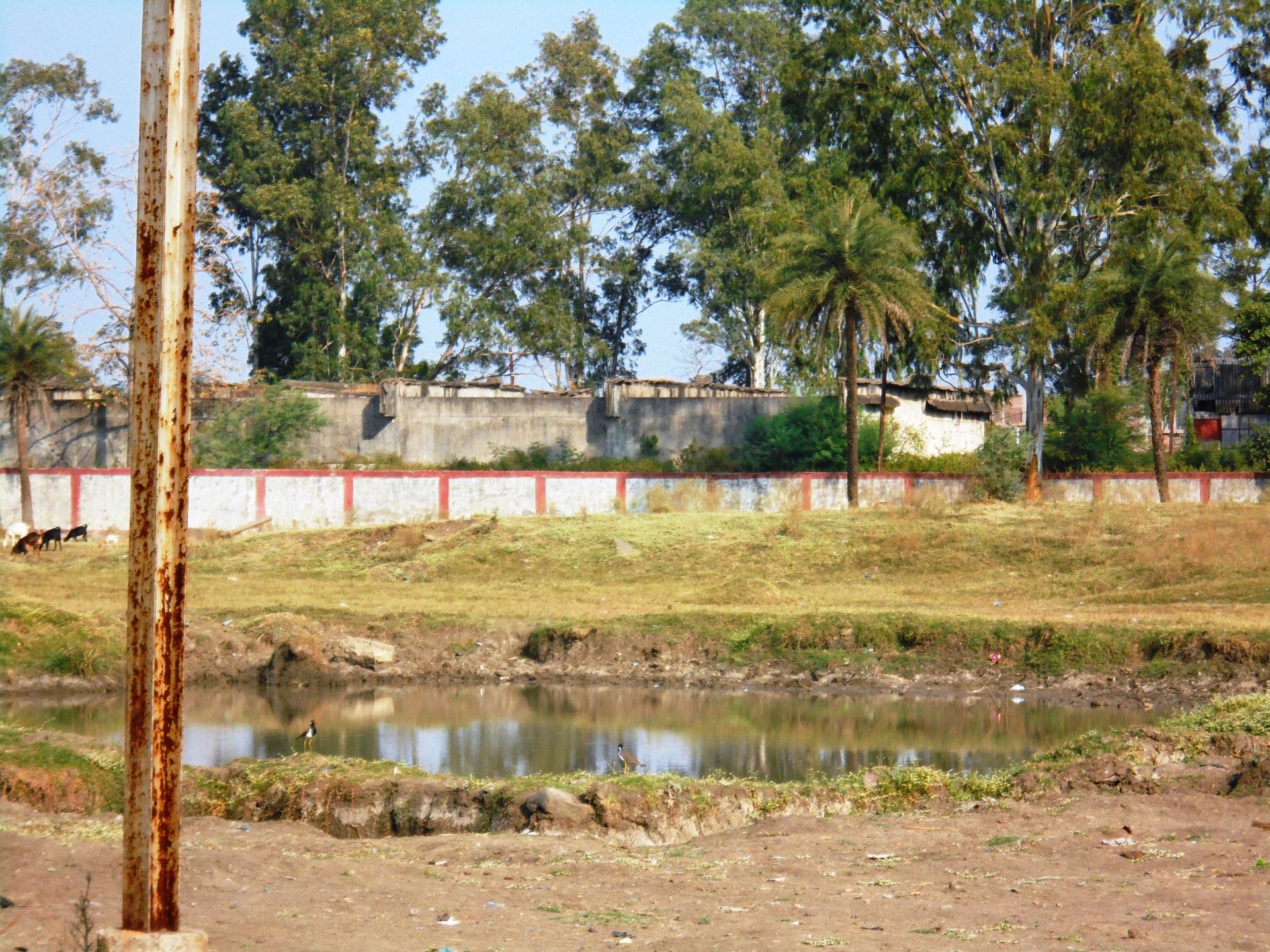
“When cool air blows over the city and it rains in Bhopal bringing welcome respite to its people, I fear that toxic waste is spilling into its groundwater”, says Rajesh Kumar who shows me around the 68-acre plant site of Union Carbide India Limited (UCIL). He drives an auto for a living and is just one more person from the neighbourhoods of Bhopal dealing with respiratory problems, an exposure-related illness. 40 tonnes of methyl isocyanate gas leaked on the fateful night of December 2-3, 1984 creating a toxic cloud. A backflow of water into a methyl isocyanate tank triggered the disaster killing thousands and injuring over 5.58 lakh people. Contamination from that accident still hounds those who stay near the erstwhile pesticide plant site.
Thirty years later, the toxic waste at the site is yet to be cleaned, mainly due to legal disputes with UCIL-- they are reluctant to pay for it. In 1998, after years of legal wrangling with the company, the government of Madhya Pradesh took responsibility for the site but the clean-up hasn't yet happened. Dow Chemical, which acquired UCIL, also took over all its assets and liabilities--all except the responsibility of clearing up the polluted site. The result is that the Indian government which owns the land today is burdened with the clean-up even though it is not the polluter.
Every time there are plans to dispose of the toxic waste lying at the defunct Union Carbide plant there is a hiccup. Trial runs of the process of disposal have been conducted following the Central Pollution Control Board’s (CPCB) green signal, yet the final disposal is nowehere in sight.

How toxic is the site?
A report in Infochange India puts the amount of toxic waste as 8,000 tonnes, all of which lies out in the open in the factory’s premises. The same report claims that Indian authorities have done little to address the issue. Activists in Bhopal claim that around 40,000 people in Bhopal have been drinking the contaminated waters. Rajesh, who stays at Chandbari, fears that the toxicity at the site threatens the health of his children who were born twenty years after the gas leak. He only has to point to the puddles and the squelchy mud at the plant site to make his case.
Another report by the Peoples Science Institute (PSI), Dehradun says that while the litigation was ongoing, “little attention was paid to the fate of the accident site of the abandoned UCIL factory”. Solid toxic waste has been lying at the site of the gas tragedy for 30 years now. The same report, which assesses the degree of groundwater contamination also says that the toxins leaching through the soil into the aquifer are poisoning its waters.
Post disaster, it came to light that untreated effluents had been dumped into a large pit inside the plant premises for over ten years. The study indicated the presence of a high concentration of mercury especially in the areas immediately adjoining the UCIL plant. This point was also corroborated by environmental studies conducted by government institutions such as National Environmental Engineering and Research Institute (NEERI), 1993, which suggests that “toxic substances stored inappropriately inside the plant site were mingling with the soil. This contaminated the aquifers”.

A Centre for Science and Environment (CSE) study of 2009 found pollutants ranging from pesticides and other organic chemicals to heavy metals like mercury, lead and chromium in areas as far as three km from the site. It also said that the presence of pesticides was way above the national standard. The drinking water supply for 15 colonies and slum clusters near the site remains contaminated, as per a report by U K based advocacy group - Bhopal Medical Appeal and Bhopal based Sambhavna Clinic and pools of mercury-laden water can be spotted in the plant premises.
Authorities in denial
Authorities insist that there is no danger. The Madhya Pradesh Government continues to deny public health threats but the abovementioned report like many others suggests otherwise. “It would be nice to think the contamination had cleared up, but that’s not true”, Rajesh says. People with long term exposure to the waters have had adverse health consequences ranging from “high rates of birth defects, rapidly rising cancer rates, neurological damage, chaotic menstrual cycles and mental illness", the report says. It’s emotionally wearing to live like this. I got tired of it”, Rajesh says. “It could take a few years where it's somewhat rehabilitated, or it could be decades. It really depends on when the State Government gets out of denial”, he notes.
Moving forward from the mess
Most would agree that there is a need to do away with the institutional logjam. Now that we are out of the litigious muck, there’s one strategy the government, environmentalists, social activists and citizens should agree on: the need to deal with the toxic waste and detoxify the water. What is required is an independent environmental assessment of the project followed by an analysis of the site water quality through a long-term groundwater monitoring project.